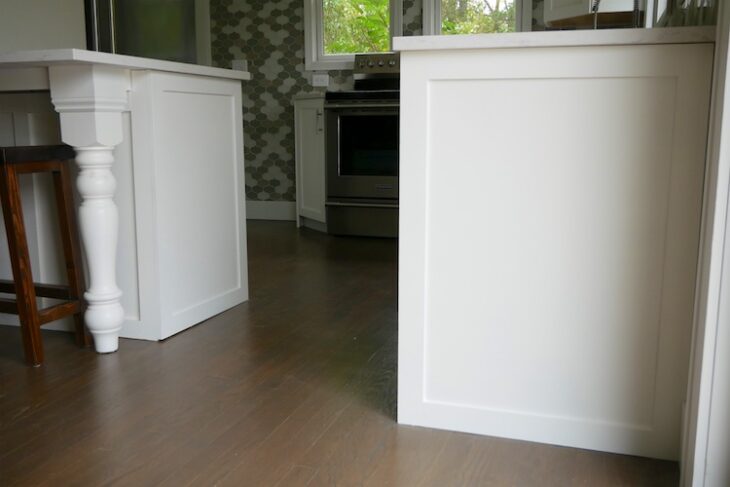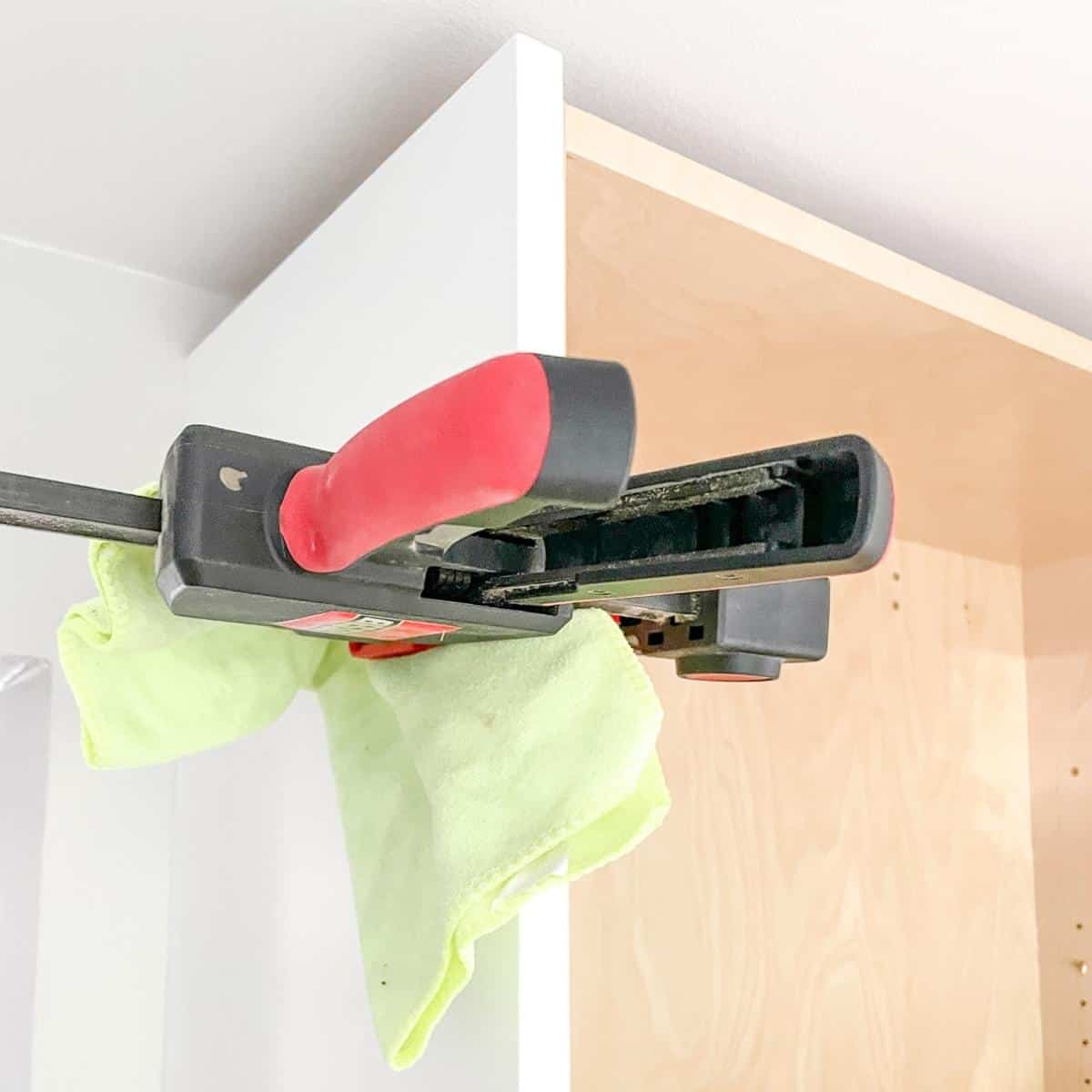Understanding DIY Cabinet End Panels

Cabinet end panels, also known as side panels, are essential components in cabinet construction. They serve as the vertical surfaces that enclose the cabinet’s sides, providing structural support and a finished aesthetic.
Materials Used for Cabinet End Panels
The choice of material for cabinet end panels significantly impacts the cabinet’s overall look, durability, and cost. Here’s a breakdown of common materials and their characteristics:
- Plywood: A versatile and affordable option, plywood offers good strength and stability. It’s available in various thicknesses and veneer finishes, allowing for customization.
- Medium-Density Fiberboard (MDF): MDF is known for its smooth, consistent surface, making it ideal for painting or laminating. It’s generally more affordable than plywood but can be less durable.
- Particleboard: Particleboard is a budget-friendly option, but it’s less durable than plywood or MDF and susceptible to moisture damage.
- Solid Wood: Solid wood panels provide a premium look and feel, offering natural beauty and durability. However, they are more expensive and require careful handling to prevent warping.
Design Elements and Styles
Cabinet end panels offer opportunities for creative design expression. Here are some common design elements and styles:
- Simple and Minimalist: These panels feature clean lines and a flat surface, often painted or stained to match the cabinet doors.
- Raised Panels: This style involves a raised, rectangular panel in the center of the end panel, creating visual interest and texture.
- Moulded Panels: Moulding is added to the edges or corners of the panel, creating decorative accents and enhancing the cabinet’s overall design.
- Inlays and Decorative Elements: Intricate designs, such as wood inlays, decorative metal accents, or etched patterns, can be incorporated into the end panels to add a touch of elegance and sophistication.
DIY Cabinet End Panel Techniques: Diy Cabinet End Panels

Creating custom cabinet end panels adds a touch of personalization and can help to seamlessly integrate your cabinets with the surrounding décor. Whether you’re building new cabinets or updating existing ones, understanding the various techniques for crafting end panels is essential.
Cutting and Shaping End Panels
Cutting and shaping end panels involves a combination of precision and creativity. The chosen method depends on the desired shape, the complexity of the design, and your comfort level with various tools.
Here are some common methods:
- Using a Table Saw: For straight cuts, a table saw is the most efficient tool. It provides accurate cuts and can handle various thicknesses of material. To ensure precise cuts, it’s crucial to use a sharp blade and a miter gauge for angled cuts.
- Using a Circular Saw: A circular saw offers more versatility than a table saw, allowing you to cut curves and irregular shapes. For precise cuts, use a guide rail and a sharp blade.
- Using a Jigsaw: For intricate cuts and curves, a jigsaw is the ideal tool. Choose a blade with the appropriate teeth per inch (TPI) for the material you’re cutting.
- Using Hand Tools: While less common, hand tools like a hand saw, chisel, and router can be used for shaping and trimming end panels. This approach requires more skill and patience but can be satisfying for those who prefer a more traditional approach.
Attaching End Panels to Cabinets
Once the end panels are cut and shaped, they need to be securely attached to the cabinets. The attachment method depends on the type of cabinet construction and the desired aesthetic.
- Using Wood Glue and Screws: This is a common and reliable method. Apply wood glue to the edges of the end panel and the cabinet sides, then secure them with screws. Pre-drilling pilot holes helps to prevent splitting the wood.
- Using Pocket Hole Joinery: Pocket hole joinery provides strong and hidden attachments. Drill pocket holes into the end panel and cabinet sides, then use pocket hole screws to join them.
- Using Dowels: For a more decorative and traditional look, dowel joinery can be used. Drill dowel holes into the end panel and cabinet sides, then insert dowels and secure them with glue.
- Using Hinges: If the end panel is meant to be removable, hinges can be used. Attach hinges to the end panel and cabinet sides, allowing the panel to swing open or detach completely.
Tips for Successful DIY Cabinet End Panels
- Measure twice, cut once: Accurate measurements are essential for achieving a professional finish. Take your time and double-check your measurements before cutting.
- Use quality materials: Choosing high-quality plywood or MDF for end panels ensures durability and a smooth finish.
- Sand the edges: Smooth out any rough edges with sandpaper to prevent splinters and create a professional look.
- Finish the panels: Apply a sealant or paint to protect the end panels from moisture and scratches.
Tips and Tricks for DIY Cabinet End Panels

Creating DIY cabinet end panels can be a rewarding experience, adding a personalized touch to your kitchen or bathroom. With the right techniques and a few helpful tips, you can achieve professional-looking results that will enhance the overall aesthetics of your cabinets.
Essential Tools and Materials, Diy cabinet end panels
Having the right tools and materials is crucial for a successful DIY cabinet end panel project. Here’s a table outlining the essential items you’ll need:
| Tools | Materials |
|---|---|
| Tape measure | Cabinet end panel material (plywood, MDF, or hardwood) |
| Pencil | Wood glue |
| Saw (circular saw, jigsaw, or table saw) | Finishing nails or screws |
| Clamps | Wood filler |
| Sandpaper (various grits) | Primer |
| Paint or stain | Paintbrush or roller |
Common Mistakes to Avoid
While DIY cabinet end panels offer a cost-effective solution, it’s important to avoid common mistakes that can affect the final outcome. Here are some key points to keep in mind:
- Inaccurate Measurements: Precise measurements are crucial for ensuring a perfect fit. Double-check your measurements before cutting the panels to avoid gaps or misalignments.
- Using the Wrong Material: Choosing the right material is essential. Plywood or MDF is often preferred for its affordability and ease of workability, while hardwood can add a touch of elegance.
- Skipping Sanding: Sanding is essential for creating a smooth and even surface for painting or staining. Don’t skip this step to avoid imperfections in the final finish.
- Applying Too Much Glue: Excess glue can lead to messy edges and difficulty in achieving a clean finish. Use a moderate amount of glue and wipe away any spills promptly.
- Poor Finishing: A well-finished surface enhances the overall look of your cabinets. Use primer to create a smooth base for paint or stain and apply multiple coats for a durable finish.
Expert Tips for Professional Results
Here are some expert tips that can help you achieve professional-looking results with your DIY cabinet end panels:
- Use a Template: Create a template for the end panels to ensure consistent size and shape. This will save time and minimize errors.
- Pre-drill Holes: Pre-drilling holes before driving screws will prevent wood from splitting and ensure a clean and secure attachment.
- Use a Clamping System: Clamps are essential for holding the end panels securely in place while the glue dries. This ensures a strong bond and prevents warping.
- Apply Finish in Thin Coats: Applying multiple thin coats of paint or stain is recommended for a smooth and even finish. Allow each coat to dry completely before applying the next.
- Clean Up Thoroughly: Clean up any spills or excess glue promptly to avoid staining and ensure a professional finish.
DIY cabinet end panels can be a great way to add a touch of customization to your kitchen or home bar. They can be used to create a seamless look for cabinets, especially when incorporating a built-in appliance like a refrigerator, as in a wet bar cabinet with fridge.
The right end panels can not only enhance the aesthetics but also help to conceal unsightly gaps or unfinished edges, resulting in a more polished and professional look for your project.
DIY cabinet end panels offer a versatile way to customize the look and feel of any cabinetry project. For those seeking a vintage aesthetic, incorporating the distinctive design elements of a mid century bar cabinet can add a touch of retro charm.
From the use of warm woods and clean lines to the inclusion of geometric patterns or metal accents, these design cues can be seamlessly integrated into DIY cabinet end panels, creating a unique and stylish statement piece.